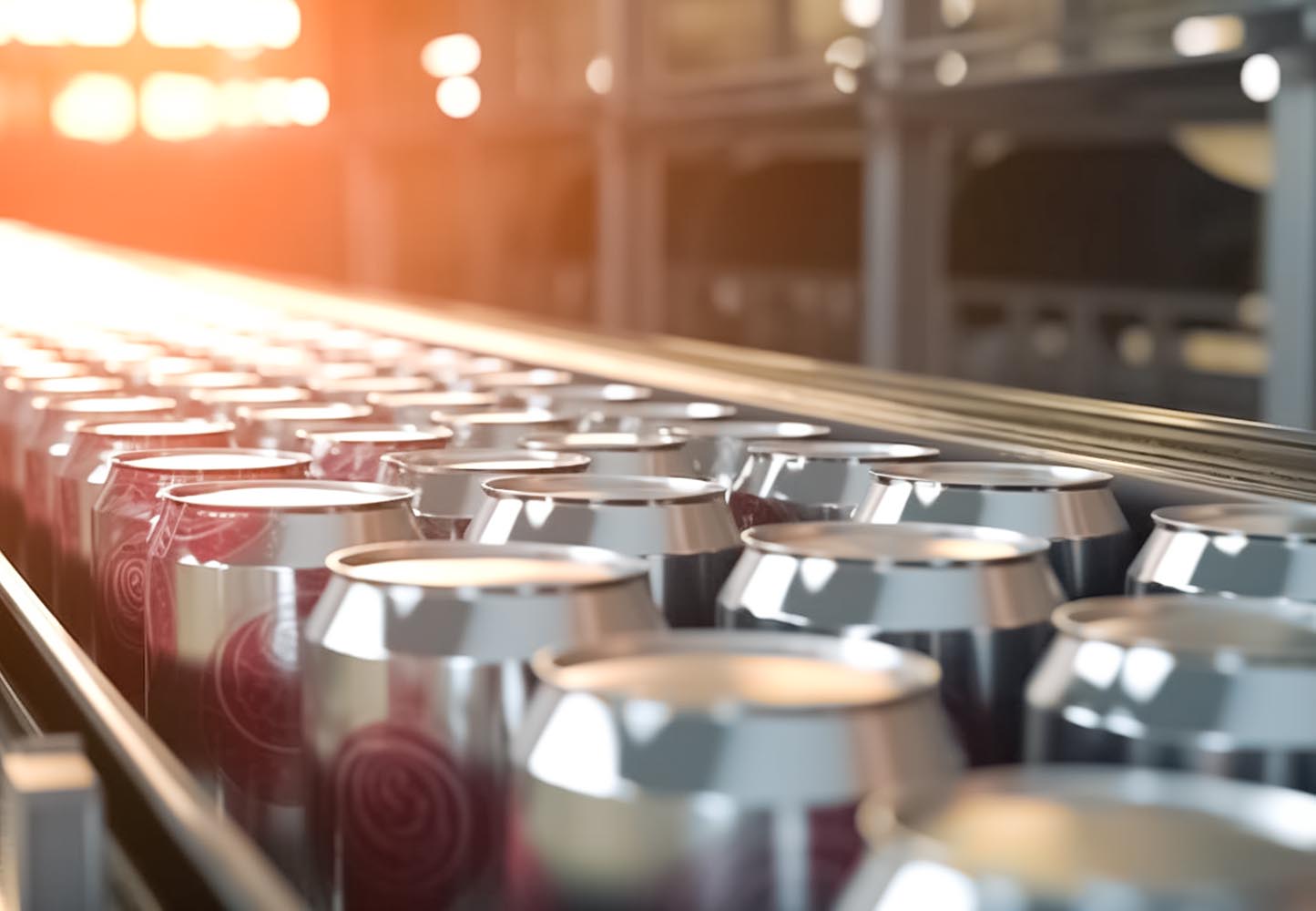
Global standards shaping the future of food-grade lubricants
Demand is increasing for food-grade lubricants that are safe for incidental contact with products consumed by humans or animals. Some analysts have projected the market for such fluids will grow at a compound annual growth rate (CAGR) of 7% to 2027, off the back of rising demand for meat, bakery, dairy and sugar. Asia-Pacific is the largest global market for food-grade lubricants and is expected to continue to lead future growth due to rapid advances in end-use industries.
In the food industry, lubricants play a vital role in reducing friction and wear in processing machinery, minimising maintenance costs, protecting against corrosion, ensuring equipment safety, eliminating contamination and improving general hygiene. But how can you be sure that your chosen lubricant is both safe and effective?
There is no official global standard, though, many manufacturers consider the ISO 21469 certification the “gold standard” for food-grade lubricants. Entitled “Safety of machinery — Lubricants with incidental product contact — Hygiene requirements,” ISO 21469:2006 was originally published in 2005 and last reviewed in 2020. Its adoption is increasing around the world, with its growing popularity shaping the global food-grade lubricants market.
During an Asian Lubricants Industry Association (ALIA) webinar on the Certification of Food-Grade Lubricants held on August 23, 2023, Ismael Martinez, manager of product certification at NSF, signalled a shift in food-grade lubricant standards—with ISO 21469 becoming a mandatory requirement in certain markets. The ALIA event was moderated by Paul Nai, regional business director of Lubrizol Southeast Asia Private Limited and chair of the ALIA Technology & Information subcommittee.
Based in Ann Arbor, Michigan, U.S.A., NSF is a non-governmental public health and safety organisation, responsible for the Non-Food Compounds Program that evaluates and registers non-food compounds used in food and beverage processing. The program ensures that these compounds do not pose a risk to food safety when used in food processing environments.
In 1999, NSF took over the program from the United States Department of Agriculture (USDA) and now completes product testing, certification and auditing in laboratories throughout the world. In 2001, NSF published the first White Book — Non-food Compounds Listing Directory, the definitive list of non-food compounds for the food industry, providing ease of verification to end users.
Brazil has a thriving agriculture sector and is the world’s fourth-largest food producer and second-largest importer. The South American nation is also second in ISO 21469 certifications, behind the United States. During the webinar, Martinez emphasised that ISO 21469 is a mandatory requirement in Brazil. If you are interested in selling food-grade lubricants in Brazil, you must adhere to ISO 21469.
Across the globe, there is a growing focus on enhancing the quality of food manufacturing. ISO 21469 is also referenced as a requirement in quality systems in Mexico, says Martinez. Although, it is not mandatory at this point, he adds. The NSF representative also outlined a growing reference to the standard in quality documents in Europe, although it is not a requirement in individual countries at this stage.
An increasing number of major global food manufacturers are calling for the ISO standard because of the assurances that it provides in quality management. ISO standards also typically have greater recognition at a global level.
Title 21 of the Code of Federal Regulations (21 CFR) is a set of regulations issued by the United States Food and Drug Administration (FDA). It covers various aspects of food and drugs, including regulations related to non-food compounds that come into contact with food during processing. 21 CFR outlines permissible ingredients and substances for the manufacturing of non-food compounds, as well as maximum use levels and other requirements necessary to ensure that these compounds do not pose a risk to food safety. It is the overarching document that covers individual certifications.

Martinez has worked for NSF for 10 years and leads several certification programs at the organisation. During the webinar, Martinez outlined the Non-food Compounds Registration Program, which is categorised based on potential contact with food products. H1 certification is the “busiest category,” says Martinez, where compounds are approved for incidental contact. The amounts in foodstuffs must not exceed 10 parts per million (0.001%).
Incidental contact is typically inadvertent and may occur through dripping, contact or spillage. H1 lubricant formulations may only contain certain base stocks, additives and thickeners, as specified by the FDA regulations, and must also be tasteless, odourless, and colourless. H2 categories are for lubricants that should not come into contact with food at all, and H3 refers to soluble oils.
H1 has a broad audience and acceptability, says Martinez. However, it is not recognised in every region. We recommend manufacturers verify with their local regulatory bodies to make sure that it will be acceptable, he says. Martinez noted continued interest in the category, with an approximate 7% growth in annually registered products. Nevertheless, it will be interesting to track the ongoing growth and appeal of H1 as more manufacturers impose the stringent ISO requirements on food-grade lubricants.
China is the world’s biggest producer, importer and consumer of food and is an increasingly attractive food market due to a burgeoning middle class. The Asian nation launched a new local certification program in June 2022, largely based on ISO 21469—with some additional local conditions. A changeover period is underway, with H1 and ISO products transitioning to the Local Certification for Lubricants with Incidental Contact (China). Beyond December 31, 2023, the ISO 21469 and H1 certifications will not suffice, and local government requirements will need to be met, suggests Martinez.
At the ALIA event, Martinez detailed the key differences between the ISO 21469 and H1 registrations. ISO 21469 provides a greater assurance that the entire process of lubricant design, manufacturing, packaging and transportation adheres to the highest health and safety standards. Compliance with the globally recognised ISO 9001 quality management system is a mandatory requirement for ISO 21469 certification.
The formulary requirements of H1 and ISO 21469 are very similar, however, that is where the comparisons end. H1 does not include product testing, with the formulation evaluated as it is supplied by the manufacturer. ISO 21469 includes 100% on-site validation of formulations, including an evaluation of all the individual chemicals within these products, and annual monitoring. A thorough risk assessment helps manufacturers identify and address areas of contamination throughout the product life cycle.
Martinez also emphasised the expanded market of ISO 21469, which can be used in the pharmaceutical, cosmetic and pet food industries.
There are five key steps to gain certification under ISO 21469 including labelling, formulation review, risk assessment, testing and an audit of the manufacturing facilities. Successful products receive a listing in the NSF White Book.
ISO 21469 is a far more involved process, with turnaround times of up to 90 days compared to four to six weeks for H1 registration. In May 2023, NSF announced that the program policies for ISO 21469 certification were updated as part of an enhancement to the certification process.
Enhancements to certification include a new application form designed to save time and remove complexity, and updated formulation review requirements that the company says will lower the initial qualification cost. A simplified risk assessment template is shorter and more intuitive to complete, and new product-level certificates will be issued, giving end users greater confidence in the products. Adjustments were made to outdated language and to some sections to add clarity. The May 2023 update did not impact any certified products so there is no implementation period for this new version.
With China’s ISO-like certification comes even greater rigour. Product testing and auditing is similar to ISO 21469, however, the standard incorporates additional traceability requirements to attempt to minimise counterfeit products, says Martinez. A certification mark and traceability code are required on the label of the certified product, with the QR code used by regulators and end users to verify the authenticity of a product. Martinez also noted that China is looking to incorporate the blockchain system to aid in the discovery of fake products by offering a tamper-proof and transparent record of the supply chain.








